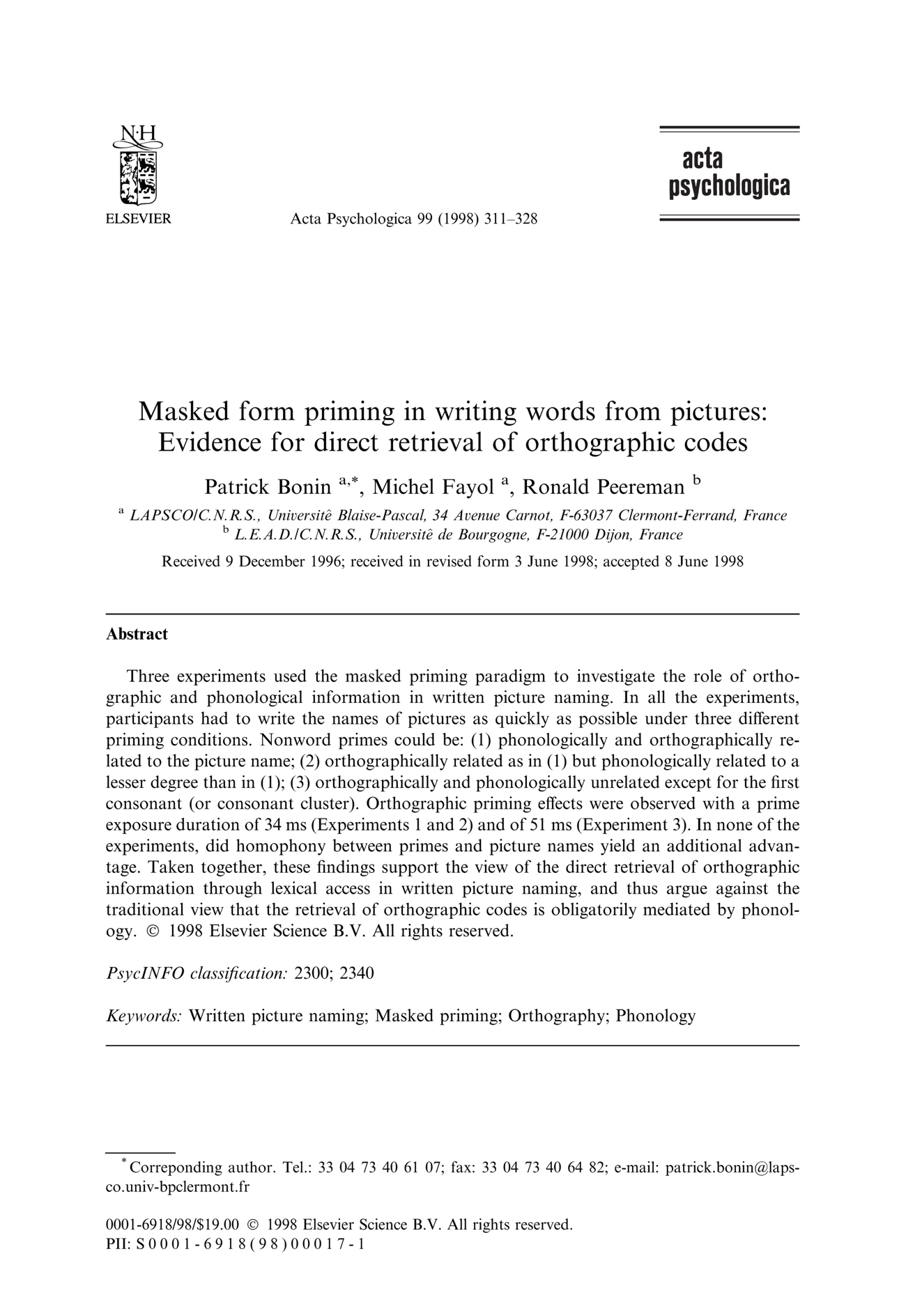Three experiments used the masked priming paradigm to investigate the role of orthographic and phonological information in writ:en picture naming, In all the experiments, participants had to write the names of pictures as quickly as possible under three different priming conditions. Nonword primes could be: (1) phonologically and orthographically related to the picture name; (2) orthographically related as in (1) but phonologically related to a lesser degree than in (1); (3) orthographically and phonologically unrelated except for the first consonant (or consonant cluster). Orthographic priming effects were observed with a prime exposure duration of 34 ms (Experiments 1 and 2) and of 51 ms (Experiment 3), In none of the experiments, did homophony between primes and picture names yield an additional advantage. Taken together, these findings support the view of the direct retrieval of orthographic information through lexical access in written picture naming, and thus argue against the traditional view that the retrieval of orthographic codes is obligatorily mediated by phonology.
Masked form priming in writing words from pictures: Evidence for direct retrieval of orthographic codes
